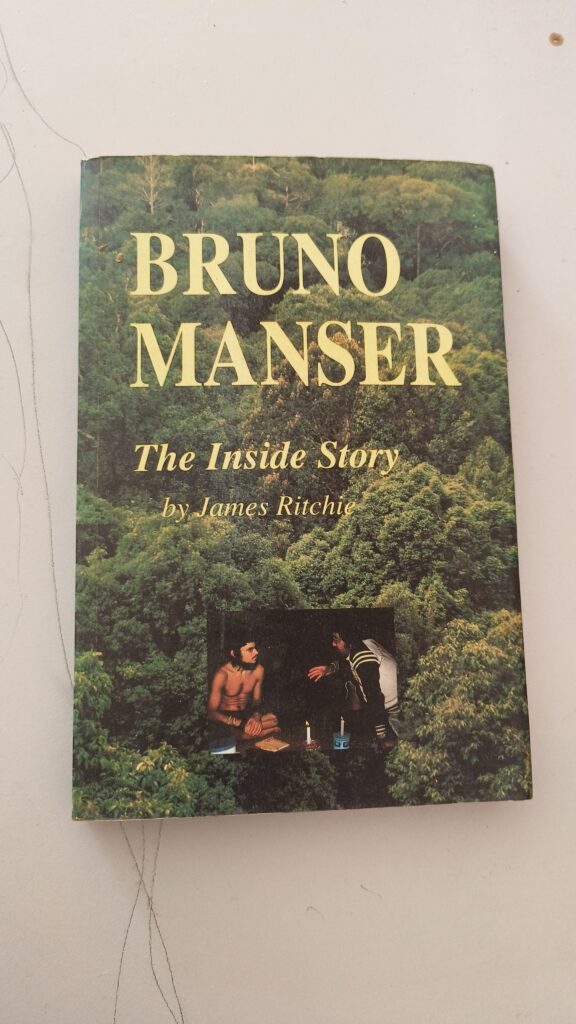By Frankie D’Cruz
PETALING JAYA: Investigative and campaigning journalist James Alexander Ritchie (left) is a figure from vanished times who remains a man of irresistible energy even in his mid-seventies.
His unblinking perspective and singular voice have remained unbroken through a swashbuckling working life played across the peninsula and Sarawak over 50 years.
He proudly describes himself as a generalist, as comfortable inside the office of the chief minister as in the rainforests of Borneo.
Sarawak’s erudite everyman said writing about the underclass, the downtrodden and dispossessed matters most to him today.
The trailblazer, who proclaimed “I know every inch of Sarawak”, has formed bonds across thousands of miles with the indigenous people, enjoying their respect and trust.
He has devoted much time to grasp the complexities of issues afflicting the indigenous people, drawn by their invaluable knowledge of practices for the sustainable management of natural resources.
Ritchie is testament to the necessity of having a broad intellectual hinterland, the value of cultivating sources and finding things out.
“Journalism is nothing if it’s not about people’s lives, everything else is glitter,” said the multiple award-winning journalist, who has authored an avalanche of deeply reported articles and some 40 books on history and his reporting adventures.
In his latest book, “Bujang Berani”, launched on May 21, he shares stories about Sarawak’s patriots, warriors and unsung heroes.
On May 27, the man whom the Kelabits of Bario Highlands, in the interior of Sarawak, call “Belaan Aran” (messenger of the king), added another feather to his illustrious career.

Sarawak’s everyman James Ritchie receiving the Tokoh Hawana award from Prime Minister Anwar Ibrahim. (Bernama pic)
Ritchie was named Tokoh Hawana (journalism icon) at the National Journalists’ Day celebrations in Kuching, for his work of long-lasting significance, clarity, fairness and innovation.
It followed the Special Jury Award he received last year at the annual Malaysian Journalism Awards, and about 20 other prizes over the years.
Ritchie, who turns 74 this month, says journalism provides an opportunity to be a voice for the voiceless.
Thrill-seeker, intense storyteller
Ritchie earned the term “legendary reporter” through his whatever-it-takes, larger-than-life approach to journalism.
There are few things he would not do to get a story. He is a thrill-seeker, a tenacious reporter with stylistic daring, whose career is peppered with brilliant scoops.
He gained fame for tracking down and writing about the late Bruno Manser, the Swiss environmentalist who led the Penan nomads to carry out blockades in the Baram region when their existence was threatened by relentless deforestation.
Ritchie recalled that his own investigative reports on the activities of Manser and the Penans involved days of jungle trekking to reach settlements that are only accessible by helicopter.
He met Manser after a year at Long Seridan, a Kelabit settlement in Miri, and forged a relationship that is well known locally and internationally.

His first book on Manser, “Bruno Manser – The Inside Story”, was published in 1994, and has a full transcript of his three-hour interview with the protestor.
Ritchie said because of his rapport with Manser, he was almost arrested by the Sarawak police special branch under the Official Secrets Act.
He said he was working on his final book about the man who came to Sarawak to explore the Mulu caves but ended up a wanted man.
Manser lived in the forests with the Penans from 1984 to 1990, living the life of a nomad.
He went missing during an ascent of the twin-peaked Batu Lawi mountain in the Kelabit Highlands. He was officially declared dead in 2005.
‘Serpico’ on the loose
In Seremban, they used to call him Serpico because like Al Pacino in the movie about an honest real-life detective who went undercover to expose corruption in the New York city police force, he was bearded and rode a motorcycle.
Ritchie, the New Straits Times (NST) Negeri Sembilan staff correspondent in 1978, rode a Suzuki 250cc. Today, he rides a 30-year-old Yamaha kapcai in Kuching.
If Pacino had leapt from the railing to catch a fleeing rapist in the film, Ritchie took down a Butterfly Gang thug with a flying rugby tackle during a police raid, and made top news himself.
He once posed as a drug addict, together with this writer, to buy ganja at a military police base in Port Dickson.
The story resulted in a review of security protocol at the base, but not before we were grilled by the chief of police Zaman Khan.
Our rampant string of exposés, including disturbing revelations about the kidnap for ransom and killing of millionaire Tan Kar Lay in Seremban, bothered the local police too much, with Zaman once barging into the NST office to give Ritchie a fatherly telling-off.
As the son of John George Ritchie, Sarawak’s first Malaysian commissioner of police, and brother of crime buster, chief inspector Richard, he was well-connected to the police fraternity.
Ritchie said after carving a name for himself in Seremban as a crime reporter, “I found myself on the way to Sarawak, a sleepy hollow which no NST reporter dared venture to.”
He refused to leave Sarawak when he was later recalled to the NST headquarters in Kuala Lumpur, and went on to work for Borneo Post, Eastern Times and New Sarawak Tribune.
Ritchie, whose mother, Lily Harpur Pierson, is of Welsh-Malay descent, is married to former Malaysia Airlines employee, Helen, and they have a daughter Rebekah, a communications undergraduate and part-time deejay.
Ink-stained trip down memory lane
There were other stories of greater significance at the time Penang-born Ritchie became a cadet reporter in 1973, but writing about crime seemed to have an immediacy and realism for him.
Ritchie said in his first year as a crime reporter he had two major scoops during the graveyard shift from 8pm until 4am.
The first scoop was on the demise of Malaysia’s second IGP Mohamed Salleh Ismael on the night of January 31, 1973.
Ritchie, who was then on hospital rounds recollected: “Tun Salleh, who was a colleague of my father, had been rushed to the general hospital by family members after a heart attack.
“As he was in sarong and did not have identification papers, the clerk on duty would not admit him until I vouched for him. He passed away soon after.”
The second big one involved Dr Ismail Abdul Rahman who died of a heart attack at about 11pm on August 2, 1973, while serving as acting prime minister.
Ritchie said for the front page exclusive in the then Straits Times, he received $50 from then managing editor Abdul Samad Ismail.
Within the first four years, he was first on the scene of major crimes such as the assassination of former IGP Abdul Rahman Hashim and the Japanese Red Army’s raid on the American embassy at Jalan Ampang.
At the height of gangsterism in Kuala Lumpur, the criminal investigation division at High Street, helmed by assistant commissioner S Kulasingam, was another of Ritchie’s haunts to get breaking stories.
Figure from vanished times
Just as Ritchie was zealous behind the yellow tape at a crime scene, he was formidable as a golfer and rugby, football, hockey and cricket player, and adorable as a pianist-singer.
How many of us can claim to have the qualities of an accomplished writer, sportsman and entertainer at the same time?
His journalistic tenacity is of a kind that is close to non-existent today, but he concedes technology has changed journalism.
He said the world of today bore little relationship to the one he started out in. “But you still need people to trust you, you need to have an inquisitive mind and it’s important to hold your cynicism close.”. FMT

